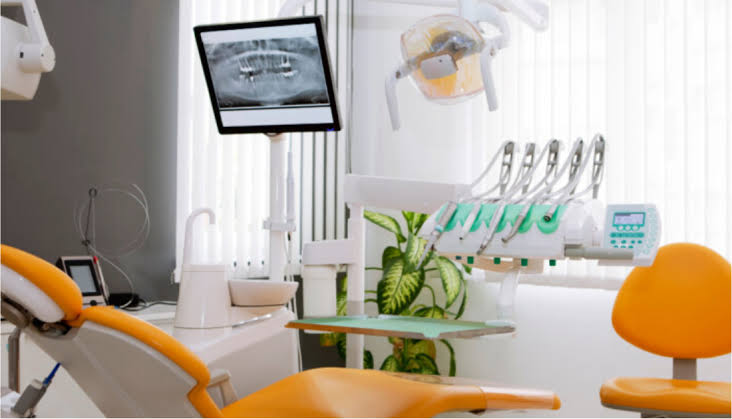In the realm of dentistry, success isn’t just about perfecting procedures or mastering the latest technology. It’s also about having a solid foundation built on essential elements that form the backbone of a thriving dental clinic. From patient care to practice management, every aspect plays a crucial role in ensuring excellence and longevity.
In this comprehensive guide, we’ll navigate through the basics, shedding light on the essential components that contribute to the success of a dental clinic.
Establishing a Patient-Centric Approach
At the heart of every successful dental clinic lies a commitment to providing exceptional patient care. Creating a welcoming and comfortable environment sets the stage for positive patient experiences. From the moment they walk through the door to the completion of their treatment, prioritizing patient satisfaction fosters loyalty and trust.
● Effective Communication: Clear and empathetic communication is essential for building rapport with patients. Listening attentively to their concerns and explaining procedures in a language they understand cultivates a sense of trust and confidence.
● Patient Education: Empowering patients with knowledge about oral health and treatment options enables them to make informed decisions. Educational resources, interactive tools, and informative discussions contribute to a patient’s understanding of their dental care journey.
● Personalized Care Plans: Recognizing that each patient is unique, personalized care plans tailored to their specific needs demonstrate a commitment to individualized treatment. Addressing concerns, accommodating preferences, and considering medical history ensure comprehensive and effective care.
Embracing Modern Technology
In today’s digital age, technology plays a vital role in enhancing dental care delivery and practice efficiency. Integrating innovative tools and systems into the clinic workflow streamlines processes and elevates the standard of care.
● Digital Imaging and Radiography: Digital X-rays and intraoral cameras offer high-resolution images with minimal radiation exposure, aiding in accurate diagnoses and treatment planning. Real-time visualization enables patients to understand their oral health status better.
● Practice Management Software: Efficient practice management software automates administrative tasks, such as appointment scheduling, patient records management, and billing. Streamlining workflows frees up time for focus on patient care and practice growth.
● Telehealth Services: Telehealth platforms enable remote consultations, follow-ups, and virtual appointments, enhancing accessibility and convenience for patients. Especially in times of restricted mobility or public health concerns, telehealth expands the reach of dental care services.
Prioritizing Infection Control and Safety
Maintaining a clean and safe environment is paramount in dental practice to prevent the spread of infections and ensure the well-being of patients and staff alike. Adhering to stringent infection control protocols and safety standards is non-negotiable.
● Sterilization Protocols: Implementing rigorous sterilization procedures for instruments and equipment minimizes the risk of cross-contamination. Autoclaves, chemical disinfectants, and disposable items are essential tools in maintaining a sterile environment.
● Personal Protective Equipment (PPE): Proper utilization of PPE, including gloves, masks, goggles, and gowns, protects dental professionals from exposure to pathogens during patient care procedures. Regular training on PPE protocols ensures compliance and safety.
● Environmental Hygiene: Regular cleaning and disinfection of surfaces, treatment rooms, and common areas reduce the transmission of infectious agents. Proper ventilation and air purification systems help maintain indoor air quality and mitigate airborne hazards.
Fostering Professional Development and Team Collaboration
A cohesive and skilled team is the backbone of a thriving dental clinic. Investing in ongoing professional development and fostering a collaborative work environment enhances team performance and patient outcomes.
● Continuing Education: Encouraging staff to pursue continuing education courses and training programs keeps them updated on the latest advancements in dentistry. Continuing education not only enhances clinical skills but also fosters a culture of lifelong learning.
● Team Meetings and Feedback Sessions: Regular team meetings provide opportunities for open communication, idea-sharing, and problem-solving. Soliciting feedback from staff members promotes a sense of ownership and engagement in practice improvement initiatives.
● Cross-Training and Role Clarity: Cross-training team members in various roles promotes flexibility and efficiency within the practice. Clearly defined roles and responsibilities prevent confusion and ensure smooth workflow coordination.
Conclusion
In the ever-evolving field of dentistry, mastering the fundamentals is crucial for establishing a prosperous dental clinic. Prioritizing patient-centric care, integrating cutting-edge technology, maintaining stringent infection control measures, and nurturing ongoing professional growth all contribute to laying a sturdy groundwork for success.
Additionally, leveraging effective dental internet marketing strategies can significantly amplify the clinic’s visibility and reach within its target audience, ultimately bolstering its growth and impact. Through unwavering dedication, innovative approaches, and a steadfast commitment to excellence, every dental practice has the potential to thrive and positively influence the oral health and overall well-being of its community.

